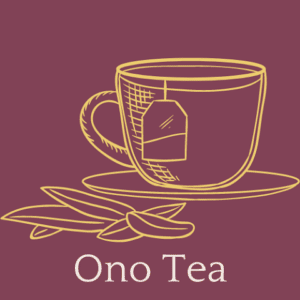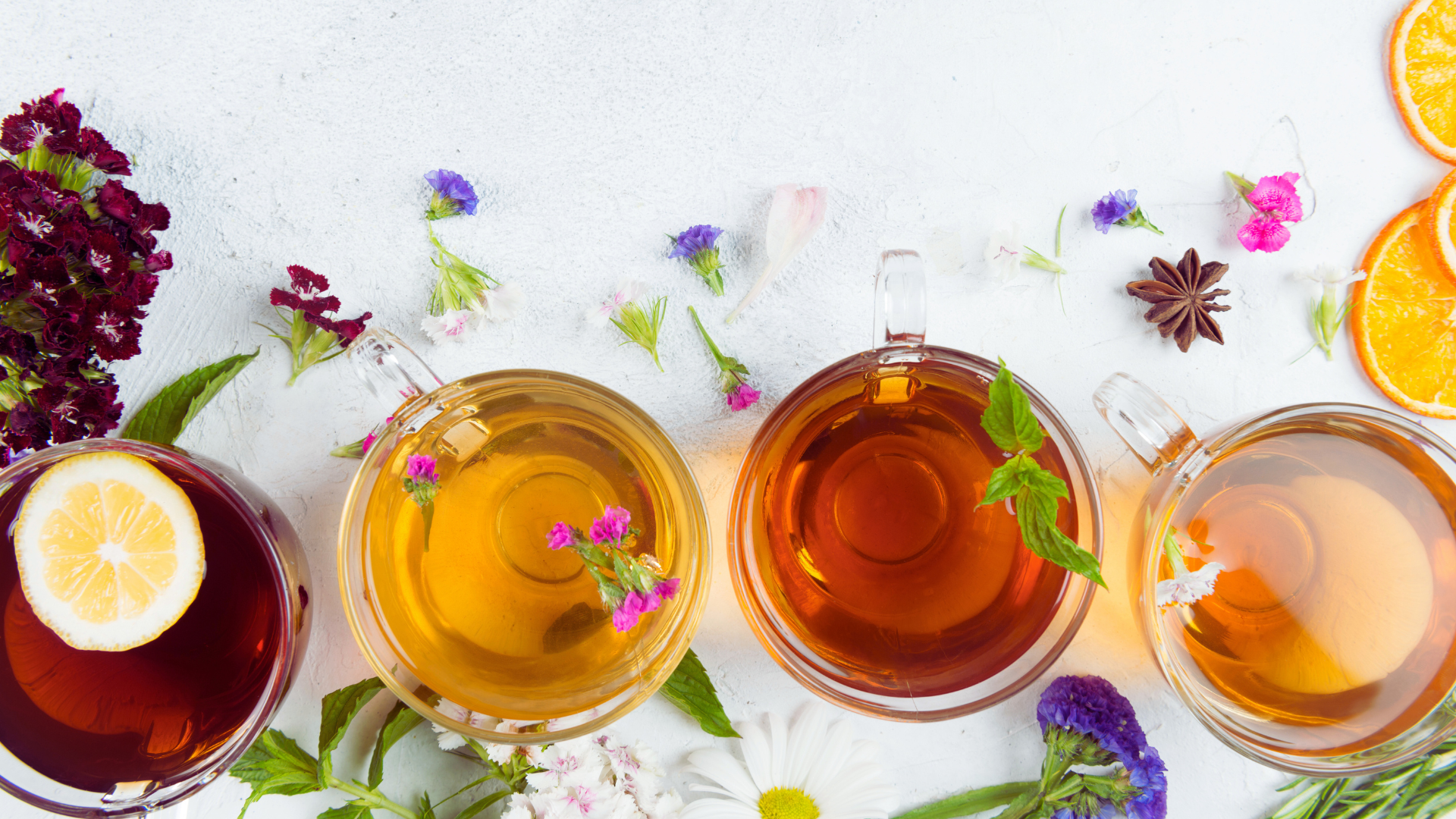Herbal teas have been cherished for centuries, offering not only a soothing ritual but also a natural way to align our bodies and minds with the rhythms of the seasons. Unlike traditional teas derived from the Camellia sinensis plant, herbal teas—often called tisanes—are crafted from a variety of dried herbs, flowers, fruits, and spices.
Each season brings its own energy, weather, and wellness needs, making it the perfect opportunity to explore herbal blends that complement the time of year. In this article, we’ll dive into the best herbal teas to sip in spring, summer, fall, and winter, uncovering their flavors, benefits, and the traditions that inspire them.
Spring: Awakening and Renewal
Spring is a season of rebirth. As the earth awakens from winter’s slumber, blossoms unfurl, and the air fills with a sense of possibility. This is the time to shed the heaviness of winter and embrace lighter, cleansing herbal teas that support detoxification and vitality.
Recommended Teas:
- Nettle Tea: Known as a nutritional powerhouse, nettle tea is a springtime favorite. Rich in vitamins (like C and A) and minerals (such as iron and magnesium), it’s a gentle detoxifier that supports the liver and kidneys. Its earthy, slightly grassy flavor pairs beautifully with a touch of honey.
- Dandelion Root Tea: Often overlooked as a weed, dandelion is a spring hero. The roasted root makes a robust, coffee-like brew that aids digestion and flushes out toxins accumulated over winter. It’s bitter yet grounding, perfect for those crisp early spring mornings.
- Lemon Balm and Mint: This uplifting duo brings brightness to spring. Lemon balm, with its citrusy notes, calms the nerves and boosts mood—ideal for shaking off seasonal sluggishness. Paired with refreshing mint, it’s a rejuvenating sip after a rainy day.
Why Spring Calls for These Teas: After months of hearty stews and indoor hibernation, our bodies crave a reset. Nettle and dandelion support the body’s natural cleansing processes, while lemon balm and mint invigorate the spirit. Try brewing these teas fresh from the garden if you can—spring’s tender leaves pack a vibrant punch.
Serving Suggestion: Enjoy nettle tea with a slice of lemon to enhance its cleansing properties, or steep lemon balm and mint together for a chilled infusion on warmer spring afternoons.
Summer: Cooling and Hydrating
Summer bursts onto the scene with heat, long days, and an invitation to play outdoors. As temperatures rise, hydration becomes key, and herbal teas take on a cooling, refreshing role. These blends are often served iced, offering a delicious way to beat the heat while nourishing the body.
Recommended Teas:
- Hibiscus Tea: With its vivid ruby hue and tart, cranberry-like flavor, hibiscus is a summer staple. Packed with antioxidants, it helps combat inflammation caused by sun exposure and keeps you cool. Studies suggest it may even support healthy blood pressure—a bonus during active summer months.
- Peppermint Tea: Nothing says refreshment like peppermint. Its menthol content creates a cooling sensation, making it a go-to for sweltering days. Sip it iced with a sprig of fresh mint for an extra zing.
- Chamomile and Lavender: This calming blend is perfect for summer evenings. Chamomile soothes sun-kissed skin and eases tension, while lavender adds a floral note that feels like a gentle breeze. It’s a lovely wind-down after a day in the sun.
Why Summer Loves These Teas: The heat can leave us dehydrated and frazzled, so summer teas focus on cooling and relaxation. Hibiscus and peppermint refresh the body, while chamomile and lavender restore balance after high-energy days. These blends also shine when infused with summer fruits like berries or citrus slices.
Serving Suggestion: Brew hibiscus tea strong, chill it, and serve over ice with a splash of sparkling water for a mocktail vibe. Peppermint tea is delightful with a few frozen cucumber slices—pure summer bliss.
Fall: Warming and Grounding
As leaves turn golden and the air grows crisp, fall invites us to slow down and savor cozy moments. This season calls for herbal teas that warm the body, boost immunity, and reflect the harvest’s bounty. Think earthy, spicy, and comforting.
Recommended Teas:
- Ginger and Turmeric: This dynamic duo is a fall essential. Ginger’s fiery warmth stimulates circulation, while turmeric’s anti-inflammatory properties help ward off colds as the weather shifts. Add a pinch of black pepper to enhance turmeric’s benefits and a drizzle of honey for sweetness.
- Rooibos: Hailing from South Africa, rooibos is a naturally caffeine-free tea with a smooth, nutty flavor. Rich in antioxidants, it supports immunity and feels like a hug in a mug—perfect for chilly fall evenings.
- Cinnamon and Apple: Capture the essence of autumn with this blend. Cinnamon warms the body and aids digestion (handy after hearty fall meals), while dried apple pieces add a touch of sweetness and nostalgia, reminiscent of orchard harvests.
Why Fall Embraces These Teas: Our bodies need warmth and resilience as temperatures drop. Ginger and turmeric fortify us against seasonal bugs, rooibos provides steady comfort, and cinnamon-apple evokes the spirit of fall festivals. These teas pair beautifully with the season’s spices—think nutmeg, cloves, or cardamom.
Serving Suggestion: Simmer ginger and turmeric with a cinnamon stick for a bold, spicy brew, or steep rooibos with a splash of almond milk for a creamy treat. Cinnamon-apple tea shines when served hot with a slice of fresh apple on the rim.
Winter: Comfort and Immunity
Winter wraps us in a blanket of stillness, often accompanied by snow, shorter days, and a need for deep nourishment. Herbal teas in this season are all about warmth, immune support, and cozy indulgence—think rich flavors that linger like a fireside chat.
Recommended Teas:
- Elderberry and Rosehip: A winter powerhouse, elderberry is renowned for its immune-boosting properties, backed by research showing it may reduce the duration of colds. Rosehip adds a tart, vitamin C-rich twist, making this blend both protective and delicious.
- Chai-Spiced Herbal Blend: Skip the black tea base and craft a caffeine-free chai with herbs like cinnamon, cloves, cardamom, and star anise. It’s warming, aromatic, and perfect for sipping under a blanket.
- Holy Basil (Tulsi): Known as an adaptogen, holy basil helps the body cope with winter stress and supports respiratory health. Its peppery, clove-like flavor feels grounding and restorative.
Why Winter Chooses These Teas: Cold and flu season demands extra care, and elderberry-rosehip delivers. Chai spices warm the soul, while holy basil nurtures resilience during the darkest months. These teas are like a shield against winter’s challenges, wrapped in comforting flavors.
Serving Suggestion: Simmer elderberry and rosehip with a touch of orange peel for a festive twist, or brew chai spices with a splash of oat milk for a latte-like treat. Holy basil shines with a dollop of raw honey to soothe the throat.
Crafting Your Seasonal Tea Ritual
Herbal teas are more than just beverages—they’re a way to connect with nature’s cycles. To make the most of your seasonal sipping, consider these tips:
- Source Quality Herbs: Opt for organic, loose-leaf herbs when possible. They offer richer flavors and potency compared to pre-packaged tea bags.
- Experiment with Blends: Mix and match herbs from each season—like adding mint to hibiscus in summer or cinnamon to elderberry in winter—to suit your taste.
- Mindful Moments: Take a few minutes to savor your tea. Inhale its aroma, feel its warmth or coolness, and let it anchor you in the present.
Seasonal herbal teas also lend themselves to creativity. Host a spring tea party with nettle and lemon balm infusions, or blend a fall batch of cinnamon-apple tea for holiday gifts. The possibilities are as endless as the seasons themselves.
A Year-Round Journey
From the cleansing freshness of spring to the cozy embrace of winter, herbal teas offer a delicious, healthful way to celebrate each season. Spring’s nettle and dandelion awaken us, summer’s hibiscus and peppermint cool us, fall’s ginger and rooibos ground us, and winter’s elderberry and chai comfort us. These blends not only taste good but also align with our bodies’ shifting needs, drawing on nature’s wisdom to keep us balanced year-round.
So, grab your favorite mug, steep a seasonal blend, and let the flavors transport you through the calendar. Whether you’re welcoming new blooms or watching snow fall, there’s an herbal tea waiting to be your companion.
Sources
- Mount Sinai. (2022). “Elderberry.” Available at: https://www.mountsinai.org/health-library/herb/elderberry
- Provides evidence on elderberry’s immune-boosting effects, relevant to winter teas.
- Harvard T.H. Chan School of Public Health. (2019). “The Nutrition Source: Antioxidants.” Available at: https://www.hsph.harvard.edu/nutritionsource/antioxidants/

